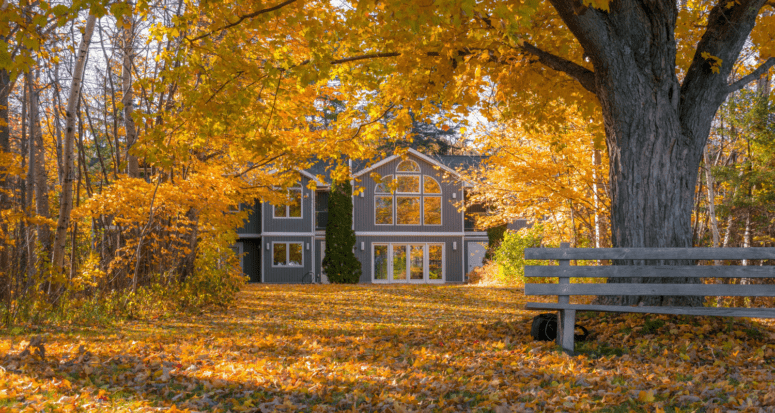Unloading a Fixer-Upper? Avoid These 11 Mistakes to Sell Your House Fast As-Is
- Published on
- 4 min read
-
 Mikayla Uber Contributing AuthorClose
Mikayla Uber Contributing AuthorClose Mikayla Uber Contributing Author
Mikayla Uber Contributing AuthorMikayla is a writer and content specialist from Portland, Oregon with experience writing about travel, women’s health and beauty, and the luxury hotel industry.
Ready to move out of your fixer-upper? If you plan wisely, you can skip the renovations you never got around to and sell your house fast as-is.
Selling a house as is means that a house is for sale in its current condition — the seller will not complete repairs or improvements to close the deal. If you need to move ASAP and don’t have the time, energy, or funds to fix up your home first, an as-is home sale could be the way to go. But this home sale strategy requires expert execution — otherwise you may sell your house for even less than you’d hoped for.
We spoke with top real estate agents Kate Duggan and Anne Sena to glean insight on how to pull off a fixer-upper home sale. Here are 10 common mistakes to avoid to sell your house fast as-is:
1. Overshoot the listing price
Pricing is key to selling a home fast, and this is especially true for as-is home sales.
One of the biggest mistakes you can make is setting the price unrealistically high. Today’s homebuyers are savvy — they know the going market price for homes. If your home is overpriced and needs significant work, expect buyers to glaze over your listing and offer on other homes instead.
Instead, you want to list your as-is property slightly below market value. A home priced lower than the competition will attract buyers looking to score a deal who don’t mind committing to future remodeling work.
You can preview how much your home is worth with our Home Value Estimator tool. When you’re ready to pinpoint a strategic listing price, reach out to a top real estate agent who has experience selling fixer-uppers.
2. Skip a pre-listing home inspection
If you’re listing your home as-is, don’t pass on a pre-listing home inspection. By conducting the home inspection before you list, you can price your home accurately to reflect needed repairs and market the property as “pre-inspected.”
Buyers will feel more confident placing offers on a pre-inspected as-is home since they can estimate their total investment in the property: the sale price, plus the cost of needed repairs.
According to HomeAdvisor, the national average cost of a home inspection is $328 — a small price to pay to boost your home’s marketability.
3. Neglect to add curb appeal
A little TLC goes a long way when it comes to your home’s exterior. Duggan advises that sellers make their exterior as fresh and clean as possible to attract buyers. Excellent curb appeal helps buyers see an as-is home’s potential, convincing them that your diamond in the rough would be worth polishing up.
Curb appeal can also help you sell your as-is home for more money. Research shows that homes with great curb appeal tend to sell for 7% more than similar homes with uninviting exteriors.
Duggan recommends a simple yard cleanup, including raking up leaves and removing debris and moss from bushes, trees, and exterior home features. A fresh coat of paint on windows and the house exterior also helps make a great first impression. For the best results possible, hire a professional landscaper to plant flowers and maintain your front yard throughout the listing period.

4. Brush off cleaning and decluttering your home
If you want to sell your as-is home fast, don’t skip decluttering. Some buyers can see past outdated wood paneling and popcorn ceilings, but no buyer wants to purchase a home that looks dirty and neglected.
“Declutter as much as you can,” advises Duggan. “You’re going to have to move anyway. If there’s a way for you to start getting rid of things you don’t need, I recommend doing that.”
Take the time to pack away belongings, including personal items like family photos. Clear your countertops and tuck away appliances like the coffee machine, tea kettle, and toaster. Buyers often peek inside closets and cabinets, so tidy and organize these spaces.
You’ll also want to deep clean every room in the house, scrubbing down carpets, kitchen cabinets, and bathroom tiles. If you’re short on time, you can call in professional cleaners to help get the job done.
5. Hire a real estate agent without fixer-upper experience
If you need to sell your fixer-upper fast, it’s essential to hire a top real estate agent in your area with a proven track record of selling homes as-is.
“The most important thing is to hire a real estate agent who is not afraid to pick up the phone and really get your property out there. Hiring the wrong agent could cost a seller thousands of dollars,” Sena emphasizes, noting that it often takes extra effort to find buyers interested in homes sold as-is.
Moreover, agent-assisted home sales statistically fetch more money than For-Sale-By-Owner (FSBO) homes. According to the National Association of Realtors (NAR), the average FSBO home sold for $200,000, while the average agent-assisted home sold for $280,000. A top agent can sell your as-is home for even more — our data reveals that the top 5% of agents sell homes for up to 10% more than their peers.
6. Forget to compare what a direct-buyer would pay
Before you list your fixer-upper on the market, see how much a direct buyer would pay. Some direct buyers like iBuyers and local fix-and-flip companies purchase your home as-is, often in a matter of weeks. This expedited process allows you to skip the home prep process, including staging and showing.
Just know that when you sell to a direct buyer, you trade the best price possible for convenience and certainty. Direct buyers purchase your home with the intent to sell it for more money than their investment, including the purchase price, repairs, and operating costs.
See how much direct buyers would pay for your home with HomeLight’s Simple Sale. We’ll share your property with the largest real estate buyer network in the country and gather offers from pre-approved buyers.
Once all offers are in, we’ll introduce you to the highest bidder and show you a side-by-side estimate of what you could sell your house for on the market with a top agent. That way, you can make an informed decision on how to best move forward with your sale.
7. Oversell your home in the listing description
Once you’ve gotten your house in order and settled on a listing price, start crafting a compelling listing description. About 43% of buyers begin their home search online, with 86% of those buyers saying that detailed information in the description is “very useful.”
The listing description is your chance to note your home’s best features, like proximity to parks, schools, restaurants, and public transit. However, Duggan warns that “you need to make sure you’re painting a realistic picture” with your description. You don’t want buyers to feel underwhelmed when they view your home in person.
When marketing a fixer-upper, focus on the positives and use keywords that add value to your home. You can also create a sense of urgency by including a sentence like, “All offers must be submitted by DATE.” At the end of the description, Duggan suggests adding a cute line like “this home needs a little work, but with some elbow grease, you can make this property shine.”

8. Ignore the staging process
The art of staging is a crucial part of the home-selling process, particularly if you want to sell a home quickly. While you might not have time or money to rehab your home with serious remodeling projects, investing in staging can help you sell your property as-is for more money. According to NAR, 31% of buyers increased their offer by 1% to 5% for staged homes compared to unstaged homes.
Staging a fixer-upper differs in some ways from a traditional turnkey home. With a fixer-upper, you want to sell the house itself, not necessarily the fantasy of living there. Here are a few tips for staging an as-is home:
- Include less furniture in your rooms, so it’s easier for buyers to see the walls, floors, and other structural details.
- Let the light pour in by removing blinds, opening windows, and putting fresh bulbs in lamps.
- Replace old furniture with neutral transitional or contemporary pieces to help buyers envision what the house will look like remodeled.
- Don’t underestimate the power of a good-smelling home. Burn lightly fragranced citrus candles or bake some cookies before showings and open houses to add to the cozy atmosphere.
9. Slack on accommodating showings
If a speedy home sale is your goal, you must accommodate showing requests as much as possible. While last-minute showings are a nightmare to schedule, nobody can buy your home if they can’t see it for themselves.
In-person showings are particularly important for as-is home sales since the buyer accepts any defects or problems the home might possess when they commit to an offer. In addition to showings, consider hosting a well-timed open house to get a wider variety of buyers through your doors. An open house could convert a casual passerby into a serious buyer.
10. Forget to time your sale strategically
Even if you’re in a seller’s market, there are still certain times a year that are better than others when it comes to selling a house fast. Based on our data, the best month to sell a house quickly is July. Since it takes three months on average from list to close, we recommend listing your home in April to catch the peak buying season.
To pinpoint the optimal selling window in your local market, plug your city into HomeLight’s Best Time to Sell calculator.

11. Fail to disclose known issues
As with any home sale, you must disclose known property issues when you sell your home as-is.
Seller disclosures include known issues with:
- Lead paint
- Asbestos
- Environmental hazards (e.g., radon)
- Natural hazards (e.g., floor and fire risk)
- Boundary line disputes
- Structural and mechanical issues (e.g., issues with plumbing, electrical system, built-in appliances, central heating, and other mechanical systems.)
If you don’t disclose known property issues, your buyer can claim breach of contract and intentional misrepresentation. The buyer can sue and take you to court to end the sale or fight for repair compensation and pay additional damages.
Header Image Source: (Jonnelle Yankovich / Unsplash)
